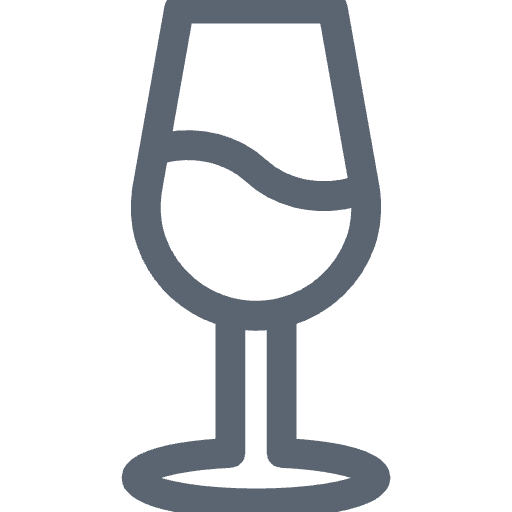About {{collection.title}}
Rheinhessen, located in Rhineland-Palatinate, is Germany's largest wine-growing region, with over 26,500 hectares of vineyards, stretching from Mainz in the northeast through Alzey in the west to Worms in the south. Approximately one-fifth of Rheinhessen is planted with vines, and of Rheinhessen's 136 municipalities, only Budenheim, Hochborn, Eich, and Hamm do not practice viticulture. For many decades, the majority of the wine-growing region was considered a production site for inexpensive, mass-produced wines. High yields from less distinctive varieties such as Müller-Thurgau or Dornfelder generally found their way into unimpressive blends. Only Silvaner, particularly from the south, was considered an enjoyable exception.
Blood-red soils and unique opulence
And then, of course, there was the small village of Nierstein, which served as a beacon of quality. The "Red Hang" in eastern Rheinhessen, and the entire Rhine valley in general, pamper the vineyards with high temperatures, low rainfall, and blood-red soils of red sandstone, clay, and slate (service note: the red color is difficult to remove from shoes and clothes after extensive vineyard hikes). These are ideal conditions for Riesling, which, in the outstanding vineyards of Hipping, Ölberg, Orbel, Pettenthal, and Rothenberg, produces wines of excellent quality and unique character. Typical features include a stunning opulence of aromas, occasionally expressed in peach, ripe citrus fruits, and spicy smoky notes.
A new star named Wonnegau
However, the days of the Rhine terrace as the sole guarantor of quality are long gone. A large portion of Rheinhessen's vineyards are protected from strong winds and precipitation by hills in the east (up to 600 m above sea level). Even if the hinterland isn't quite as warm as along the Rhine, temperatures remain mild well into autumn. Many villages boast promising soils of loess, sand, or limestone, and today they radically focus on the highest quality. One region in the southwest, the Wonnegau, in particular, has received enormous attention and worldwide recognition. With their predominantly calcareous soils and a clear focus on Riesling and Pinot Noir, the small wine-growing villages of Dittelsheim, Mölsheim, Hohen Sülzen, Westhofen, and above all, Flörsheim-Dalsheim, have steadily gained the attention of the international wine world since the 1990s. The wines of big names like Wittmann and Keller have become an integral part of the world's top wines, and the Westhofen vineyards of Morstein and Brunnenhäuschen in particular now produce some of the most sought-after (and probably also the best) Rieslings in the world.
A special winemaking community
Of Germany's 13 wine-growing regions, Rheinhessen has certainly experienced the most impressive development in terms of quality, reputation, and price. This is likely due in large part to the focused consistency and clear vision of some winemakers who, by focusing on the essentials and sharpening their own profile, have ensured a flourishing of Rheinhessen wines. This mindset can also be seen in the "Maxime Herkunft" (Provenance Principle), an organization of 70 wineries founded in early 2017 with the shared mission of voluntary but consistent application of the three-tier classification model consisting of estate, local, and site wines.
Despite all the focus, Rheinhessen remains a diverse wine-growing region with much to discover and a wealth of treasures beyond the big names.
FAQ about Rheinhessen wine
Which wine is grown in Rheinhessen?
Rheinhessen is one of Germany's largest wine-growing regions and offers a wide variety of grape varieties. Particularly well-known are white wine varieties such as Riesling, Silvaner, and Müller-Thurgau, as well as red wine varieties such as Pinot Noir and Dornfelder.
Apart from wine, what is mainly grown in Rheinhessen?
In addition to viticulture, other agricultural products are also cultivated in Rheinhessen, including grain, rapeseed, corn, and sugar beets. The region is also known for its vegetable and fruit cultivation.
What kind of wine is Rheinhessen?
Rheinhessen produces a wide range of wines, from dry to sweet, both white and red. The region is known for its innovative winemakers and their diverse wine styles.
Where is the Rheinhessen wine-growing region?
Rheinhessen is a wine-growing region in Germany, located west of the Rhine, south of Mainz and west of Worms. It stretches along the Rhine River.
In which federal state is the Rheinhessen region located?
Rheinhessen is located in the German state of Rhineland-Palatinate. It is one of the country's most important wine-growing regions.

 Rheinhessen
Rheinhessen  Scheurebe, dry
Scheurebe, dry aromatic & fresh
aromatic & fresh

 Rheinhessen
Rheinhessen  Riesling, dry
Riesling, dry fruity & aromatic
fruity & aromatic

 Rheinhessen
Rheinhessen  Auxerrois, dry
Auxerrois, dry melting & elegant
melting & elegant

 Rheinhessen
Rheinhessen  Pinot Noir, dry
Pinot Noir, dry juicy & puristic
juicy & puristic

 Rheinhessen
Rheinhessen  Riesling, dry
Riesling, dry complex & melting
complex & melting

 Rheinhessen
Rheinhessen  Pinot Blanc, dry
Pinot Blanc, dry creamy & balanced
creamy & balanced

 Rheinhessen
Rheinhessen  Riesling, dry
Riesling, dry mineral & elegant
mineral & elegant

 Rheinhessen
Rheinhessen  Riesling, dry
Riesling, dry complex & melting
complex & melting

 Rheinhessen
Rheinhessen  Riesling, dry
Riesling, dry fruity & aromatic
fruity & aromatic

 Rheinhessen
Rheinhessen  Riesling, dry
Riesling, dry mineral & elegant
mineral & elegant

 Rheinhessen
Rheinhessen  Riesling, dry
Riesling, dry cool and juicy
cool and juicy

 Rheinhessen
Rheinhessen  Riesling, dry
Riesling, dry mineral & intense
mineral & intense

 Rheinhessen
Rheinhessen  Riesling, dry
Riesling, dry mineral & intense
mineral & intense










